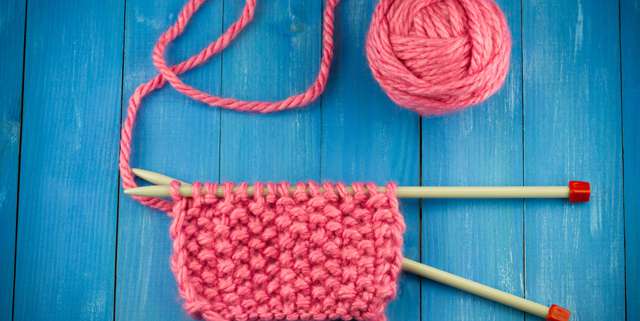
A renewed interest in knitting has ushered in an increase in demand for yarn. Image Source: Shutterstock user Studio ART
Knitting, once imagined to be a pastime solely for older generations, is undergoing something of a renaissance. Driven by YouTube, Etsy, and lifestyle bloggers, young people are increasingly learning how to knit, creating everything from sweaters to activist art projects to wooly simulacra of biological structures. But while online environments may have helped spur the proliferation of knitting, Juliet Bernard, editor of The Knitter magazine, believes its popularity is growing in part as a backlash against digital environments. “With so many of us working in the service, management, digital, and creative industries, we don’t actually ‘make’ anything,” she says. “The pride in being able to stand back and admire something that we have physically produced is incredibly satisfying.”1 Rosy Greenlees, executive director of Crafts Council, agrees. “People want to connect to the real, physical world, with each other, and with the world around them, and picking up something as simple as a couple of needles and a ball of yarn can help do that.”
The renewed appeal of knitting is also driving a growing interest in and demand for yarn itself, as increasingly savvy knitters seek to realize their vision. This creates a challenge for dye houses, as packaged yarn dyeing has a wide margin of error when it comes to color variation, and maintaining a consistent color is often such a trial that yarns must be separated in dye lots to account for inconsistencies in color from one yarn batch to the next. Dye lots present a number of problems for both manufacturers and retailers and many have sought out ways to eliminate the need for them intextile manufacturing. But while certain acrylic yarns have been developed to not require dye lots, the higher cost, natural yarns popular with today’s knitters have yet to see an alternative.
Melih Günay, an expert in textile engineering, believes that the resolution to consistency issues is technology. “Quick response, just-in-time, and right-first-time dyeing can only be achieved by a basic in-house dye house laboratory,” she explains.2 Modern color measurement technologies, specifically spectrophotometers, must be an integral part of this laboratory in order to overcome common barriers to color consistency and create a wider selection of no dye lot yarns in a variety of materials.

The process of dyeing yarn can result in batch-to-batch color variations. Image Source: Shutterstock user YANNA2560



